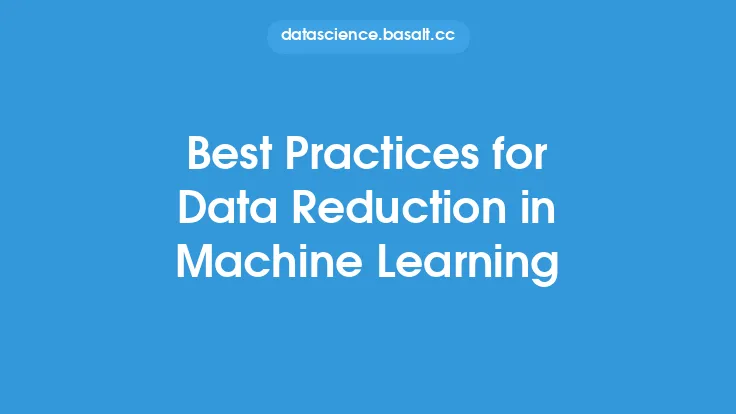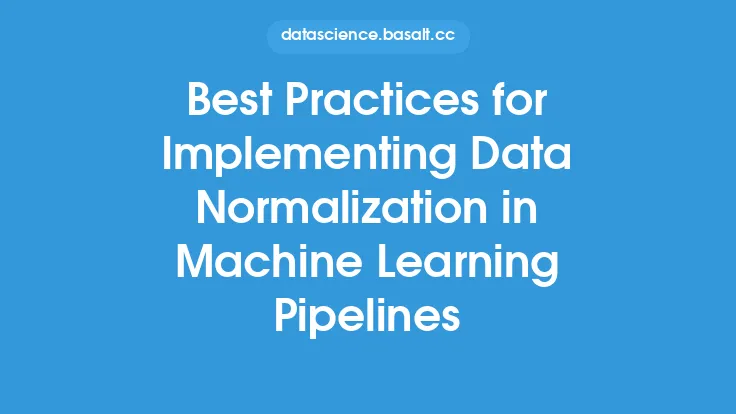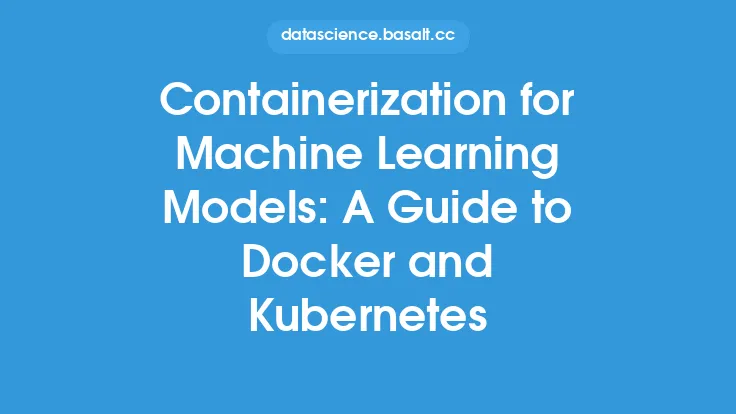When it comes to machine learning, evaluating and comparing different models is a crucial step in determining which one performs best for a given task. With the numerous algorithms and techniques available, it can be overwhelming to decide which model to use. In this article, we will delve into the best practices for evaluating and comparing machine learning models, providing a comprehensive guide on how to make informed decisions.
Introduction to Model Evaluation
Model evaluation is the process of assessing the performance of a machine learning model on a given dataset. The goal of model evaluation is to estimate how well the model will perform on unseen data, which is critical in real-world applications. There are several aspects to consider when evaluating a model, including its accuracy, precision, recall, F1 score, mean squared error, and R-squared value, among others. Each metric provides a unique insight into the model's performance, and understanding their strengths and weaknesses is essential for making informed decisions.
Choosing the Right Evaluation Metric
The choice of evaluation metric depends on the specific problem being addressed. For classification problems, accuracy, precision, recall, and F1 score are commonly used. For regression problems, mean squared error, mean absolute error, and R-squared value are more suitable. It is essential to understand the characteristics of each metric and how they relate to the problem at hand. For instance, accuracy may not be the best metric for imbalanced datasets, where precision and recall may be more informative. Similarly, mean squared error may not be suitable for datasets with outliers, where mean absolute error may be more robust.
Cross-Validation Techniques
Cross-validation is a technique used to evaluate the performance of a model on unseen data. It involves splitting the available data into training and testing sets, where the model is trained on the training set and evaluated on the testing set. There are several types of cross-validation, including k-fold cross-validation, stratified cross-validation, and leave-one-out cross-validation. K-fold cross-validation is a popular choice, where the data is split into k folds, and the model is trained and evaluated k times, with each fold serving as the testing set once. Stratified cross-validation is used for classification problems, where the data is split into folds while maintaining the class balance. Leave-one-out cross-validation is used for small datasets, where each sample is used as the testing set once.
Hyperparameter Tuning
Hyperparameter tuning is the process of adjusting the model's hyperparameters to optimize its performance. Hyperparameters are parameters that are set before training the model, such as the learning rate, regularization strength, and number of hidden layers. There are several techniques for hyperparameter tuning, including grid search, random search, and Bayesian optimization. Grid search involves trying all possible combinations of hyperparameters, while random search involves trying random combinations. Bayesian optimization uses a probabilistic approach to search for the optimal hyperparameters.
Model Comparison
Comparing different machine learning models is essential to determine which one performs best for a given task. There are several aspects to consider when comparing models, including their performance on the training and testing sets, computational complexity, and interpretability. It is essential to use the same evaluation metric and cross-validation technique when comparing models to ensure a fair comparison. Additionally, it is crucial to consider the model's complexity, as simpler models may be preferred over more complex ones if they perform similarly.
Overfitting and Underfitting
Overfitting and underfitting are two common issues that can occur when training machine learning models. Overfitting occurs when the model is too complex and fits the noise in the training data, resulting in poor performance on unseen data. Underfitting occurs when the model is too simple and fails to capture the underlying patterns in the data, resulting in poor performance on both the training and testing sets. Regularization techniques, such as L1 and L2 regularization, can be used to prevent overfitting, while increasing the model's complexity can help to prevent underfitting.
Model Selection
Model selection is the process of choosing the best model for a given task. There are several factors to consider when selecting a model, including its performance, computational complexity, and interpretability. It is essential to use a combination of evaluation metrics and cross-validation techniques to ensure that the selected model performs well on unseen data. Additionally, it is crucial to consider the model's complexity and the available computational resources.
Real-World Applications
Machine learning models are widely used in real-world applications, including image classification, natural language processing, and recommender systems. In these applications, evaluating and comparing different models is critical to ensure that the best model is used. For instance, in image classification, models such as convolutional neural networks (CNNs) and transfer learning can be used, while in natural language processing, models such as recurrent neural networks (RNNs) and transformers can be used. In recommender systems, models such as collaborative filtering and content-based filtering can be used.
Conclusion
Evaluating and comparing machine learning models is a critical step in determining which one performs best for a given task. By understanding the different evaluation metrics, cross-validation techniques, and hyperparameter tuning methods, practitioners can make informed decisions when selecting a model. Additionally, considering the model's complexity, interpretability, and computational complexity is essential for real-world applications. By following the best practices outlined in this article, practitioners can ensure that their machine learning models perform well on unseen data and provide accurate and reliable results.





